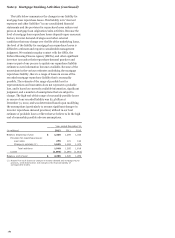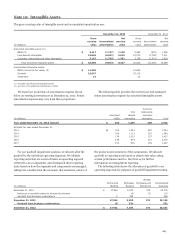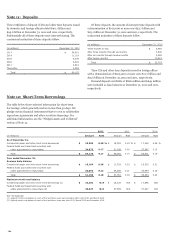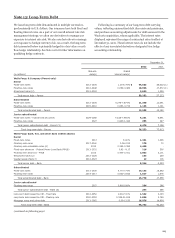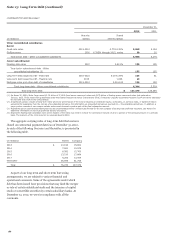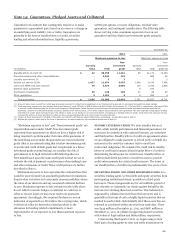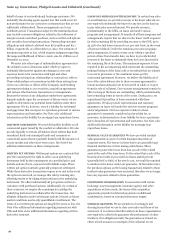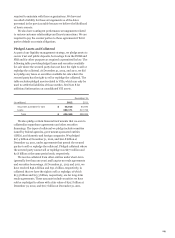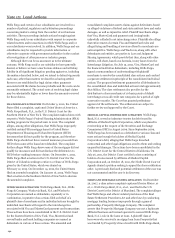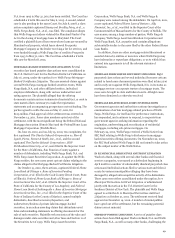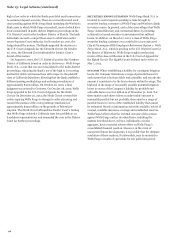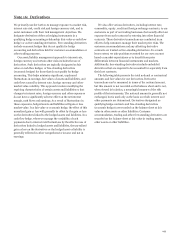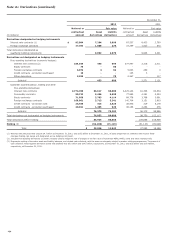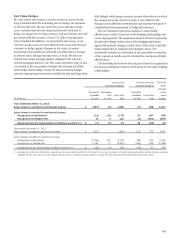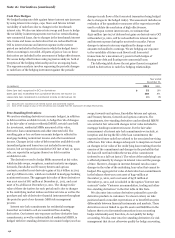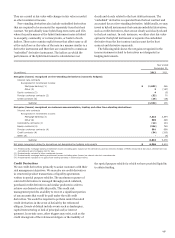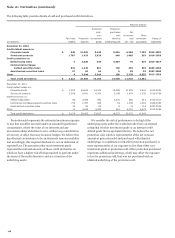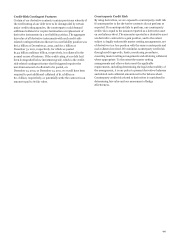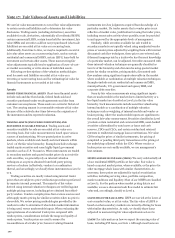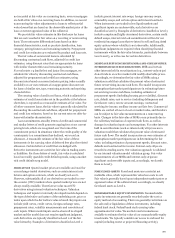Wells Fargo 2012 Annual Report Download - page 194
Download and view the complete annual report
Please find page 194 of the 2012 Wells Fargo annual report below. You can navigate through the pages in the report by either clicking on the pages listed below, or by using the keyword search tool below to find specific information within the annual report.Note 15: Legal Actions (continued)
high to low order in which the Banks post debit card transactions
to consumer deposit accounts. There are currently several such
cases pending against Wells Fargo Bank (including the Wachovia
Bank cases to which Wells Fargo succeeded), most of which have
been consolidated in multi-district litigation proceedings in the
U.S. District Court for the Southern District of Florida. The bank
defendants moved to compel these cases to arbitration under
recent Supreme Court authority. On November 22, 2011, the
Judge denied the motion. The Banks appealed the decision to
the U.S. Court of Appeals for the Eleventh Circuit. On October
26, 2012, the Eleventh Circuit affirmed the District Court’s
denial of the motion.
On August 10, 2010, the U.S. District Court for the Northern
District of California issued an order in Gutierrez v. Wells Fargo
Bank, N.A., a case that was not consolidated in the multi-district
proceedings, enjoining the Bank’s use of the high to low posting
method for debit card transactions with respect to the plaintiff
class of California depositors, directing that the Bank establish a
different posting methodology and ordering remediation of
approximately $203 million. On October 26, 2010, a final
judgment was entered in Gutierrez. On October 28, 2010, Wells
Fargo appealed to the U.S. Court of Appeals for the Ninth
Circuit. On December 26, 2012, the Ninth Circuit reversed the
order requiring Wells Fargo to change its order of posting and
vacated the portion of the order granting remediation of
approximately $203 million on the grounds of federal pre-
emption. The Ninth Circuit affirmed the District Court’s finding
that Wells Fargo violated a California state law prohibition on
fraudulent representations and remanded the case to the District
Court for further proceedings.
SECURITIES LENDING LITIGATION Wells Fargo Bank, N.A. is
involved in several separate pending actions brought by
securities lending customers of Wells Fargo and Wachovia Bank
in various courts. In general, each of the cases alleges that Wells
Fargo violated fiduciary and contractual duties by investing
collateral for loaned securities in investments that suffered
losses. In addition, on March 27, 2012, a class of Wells Fargo
securities lending customers was certified in a case captioned
City of Farmington Hills Employees Retirement System v. Wells
Fargo Bank, N.A., which is pending in the U.S. District Court for
the District of Minnesota. Wells Fargo sought interlocutory
review of the class certification in the U.S. Court of Appeals for
the Eighth Circuit. The Eighth Circuit declined such review on
May 7, 2012.
OUTLOOK When establishing a liability for contingent litigation
losses, the Company determines a range of potential losses for
each matter that is both probable and estimable, and records the
amount it considers to be the best estimate within the range. The
high end of the range of reasonably possible potential litigation
losses in excess of the Company’s liability for probable and
estimable losses was $1.0 billion as of December 31, 2012. For
these matters and others where an unfavorable outcome is
reasonably possible but not probable, there may be a range of
possible losses in excess of the established liability that cannot
be estimated. Based on information currently available, advice of
counsel, available insurance coverage and established reserves,
Wells Fargo believes that the eventual outcome of the actions
against Wells Fargo and/or its subsidiaries, including the
matters described above, will not, individually or in the
aggregate, have a material adverse effect on Wells Fargo’s
consolidated financial position. However, in the event of
unexpected future developments, it is possible that the ultimate
resolution of those matters, if unfavorable, may be material to
Wells Fargo’s results of operations for any particular period.
192


